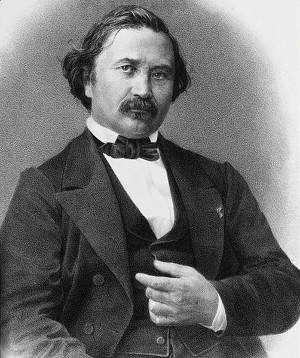
We ask for the probability that a number, integer or fractional, commensurable or incommensurable, randomly chosen between 0 and 100, is greater than 50. The answer seems evident: the number of favourable cases is half the number of possible cases. The probability is 1/2.
Instead of the number, however, we can choose its square. If the number is between 50 and 100, its square will be between 2,500 and 10,000.
The probability that a randomly chosen number between 0 and 10,000 is greater than 2,500 seems evident: the number of favourable cases is three quarters of the number of possible cases. The probability is 3/4.
The two problems are identical. Why are the two answers different?
— Joseph Bertrand, Calcul des probabilités, 1889 (translation by Sorin Bangu)
